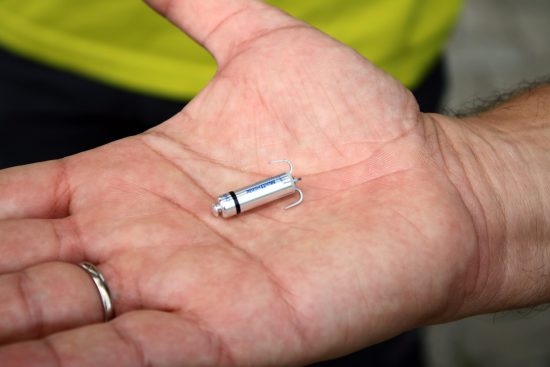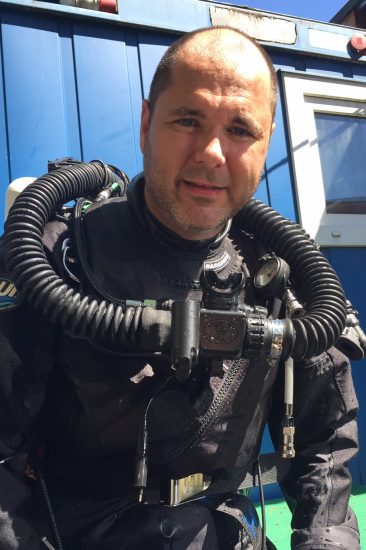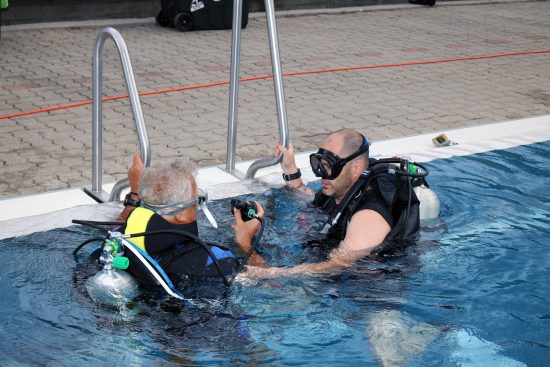




Mysterious diving accident - Interview
The case:
A 74-year-old diver suffered cardiac arrest at about eight metres'
depth when diving in Lake Garda in Italy.
Doctors at the scene
recovered the diver's body out of the water and began CPR. They managed
to revive him 15 minutes later. (see complete story: Mysterious diving
accident)
Interview with Dr. Frank Hartig
Should divers worry about Carotid Sinus Syndrome?
There's no reason to panic – but be vigilant!
Taucher.Net (TN): Frank, what is Carotid Sinus Syndrome (CSS), and why is it dangerous for divers?
Frank Hartig (FH): CSS is a syndrome in which a hypersensitive receptor
causes medical conditions ranging from collapse to cardiac arrest. The
carotid sinus node on the carotid artery is one of several pressure
detectors / peripheral sensors through which the heart receives
information about pressure states.
Sometimes, it can convey misleading
information to the heart, causing a change in the frequency of the
heartbeat or blood pressure.
There are two types. In one, there is a drop in blood pressure, and in
the other, there is a drop in the heartbeat.
Pressing on the carotid
sinus node area would cause a slight decrease in the heart rate, but
there would be no other clinical symptoms. In elderly patients, it can
cause a temporary exposure of the pulse, with symptoms like dizziness
and collapse.
There are also cases in which a true asystole (in which
the heart exhibits no electrical activity) occurs when the person is
unconscious. These people often have had several episodes of falls for
which there is no cause.
Often, the CSS remains undetected. Pressure on
the carotid artery may be caused by the head turning when shaving or
driving or ties that are too tight. In the case of divers, it can be
caused by narrow collars or a tight drysuit.
In a genuine case of CSS,
the patient would have a history of fainting and the episode can be
induced by exerting external pressure.
For divers, any form of unconsciousness is life-threatening if it
occurs underwater, as it will often result in drowning. If CSS strikes
a diver when he is underwater, it is just as deadly as an oxygen
convulsion. In such cases, survival is possible only if fellow divers
help to bring the affected diver to the surface.
In the incident
involving the 74-year-old diver, the diver had to be resuscitated
within 20 minutes.
Take note: Any activity in which the participants run the risk of
strangulation or fainting can be life threatening. Frank’s colleague
once treated a case in which a 19-year-old was hyperventilating, then
became brain dead, and ended up an organ donor.
TN: Which groups of people would be susceptible to this condition?
FH: Divers over 60 years of age should take note. Just like in the case
of persistent foramen ovale (PFO), if you don’t have any symptoms like
dizziness or fainting, there is no need to do anything.
According to
the literature, CSS affects up to 20 percent of those over the age of
sixty. Admittedly, a prevalent CSS with fainting episodes is unusual.
However, a combination of cold water, water pressure and the activity
of scuba diving can sometimes cause problems.
The older divers, as well
as the dive doctors, should take note of this. In the absence of a
bruit [murmur] over the carotid artery, one can simply press on it once
and see what happens. However, in times of medical emergencies, there
should be an intravenous line administering 1mg of atropine and a
readiness to do CPR if necessary.
TN: What exactly causes the symptoms in divers?
FH: It is often caused by the tight latex collars or drysuits worn when
diving. They occur when the diver turns and stretches his head when
looking back at his equipment. When episodes of dizziness occur during
a dive, they can be very uncomfortable. However, even the act of
donning the fins before entering the water can produce pressure on the
neck, resulting in some unpleasant consequences.
TN: Can this be avoided by not wearing attire with collars or hoods that are too narrow or tight?
FH: Yes, it can. Tight latex collars pose a danger as they can cause a drop in the blood pressure.
TN: Is CSS, like PFO, a “dormant” danger that should be checked and ruled out for all divers?
FH: No, don’t panic. There is no need to screen for PFO, and the same
goes for CSS. Rather, older divers should simply be aware of the
condition.
Just like in the case of PFO, without any of the symptoms of dizziness or fainting, there is no need to do anything.
A “classic case” would be a 70-year native longtime diver who takes
some medication for a bit of high blood pressure, high cholesterol and
is a little overweight. He dives in a drysuit because of his
rheumatism, and repeatedly complains of dizziness or fainting. Perhaps
he is also an experienced instructor and does not appear to have any
dive correlations. For this person, I would suggest getting checked out
for CSS.
TN: Is a pacemaker always an option to resolve this issue or is it administered only to certain patients?
FH: Unfortunately, no. As I have mentioned, there are also cases in
which the loss of consciousness is caused by a drop in blood pressure.
Such conditions will not be alleviated by the use of a pacemaker.
Furthermore, there are complex disorders that cannot be resolved by
pacemakers. This is all quite complex.
TN: So far, pacemakers have always been implanted in the top half of
the chest and need to be replaced after seven to eight years. However,
as I understand it, in the case of the 74-year-old diver, the pacemaker
was implanted directly in the heart?
FH: Yes, exactly. This pacemaker was inserted directly in the right
ventricle, and did not require any wires or gadgets. The attachment is
minimally invasive, as it extends through a right-heart catheter over
the groin. When the battery power runs out, it can be replaced by a new
set of batteries, without affecting the body’s hemodynamics.
TN: What would you recommend for scuba divers who suspect they may have
CSS because they feel pressure in the carotid area and often experience
anxiety or vertigo when wearing tight collars?
FH: I would recommend that these divers consult either a doctor with
diving experience, or an experienced internist. Often, there are other
causes of this condition. A few years ago, I remember there was this
overweight diver who was ascending. His neck, which was about collar
size 46, was squeezed in his drysuit’s supertight latex collar. When he
stooped to tie his boots, he blacked out. This was comparable to a
stranglehold in judo, so sometimes even healthy carotid arteries would
not be able to withstand the pressure and also result in the person’s
loss of consciousness. For that diver, we had to cut away the collar
and do CPR on him for two minutes.
Another case involved a Tyrolean farmer on his way to church. He had
worn a necktie and then crashed into a guardrail on his driveway as he
looked over his shoulder and lost consciousness.
TN: Thank you very much for the interesting conversation.
Resume:
Dr Frank Hartig
Internal medicine senior physician and intensive care specialist at the
Innsbruck University Hospital (trauma room, emergency room, intensive
care). Dive doctor, rheumatologist, ICU
air rescue doctor.
Born in January 1972, in Konstanz, Bodensee.
Married to Dr Andrea Köhler, with three children.
Frank’s life motto: “Ignite in others what burns within you.” “You have to live with your actions.”
Barakuda Examiner for technical diving and freediving.
Researches with
Dr Andrea Köhler professionally (university hospital, research
projects, funding projects, etc), and on diving medicine and
decompression during his leisure. If he has time in-between projects,
he flies with the Tyrol Air Ambulance around the world and brings back
ICU patients, including many from diving accidents.
Frank spends all year on research, and about 250 hours underwater at 4
degrees Celsius (Trimix OC or CCR). He conducts research on dive
medicine issues, primarily technical diving and extreme decompression
profiles. In-between, he loves free-diving.
Head of instructor training in scuba diving in Giglio or in Achensee. Frank's teaching motto: “Learn, laugh, sweat ...”
Research priorities: Gas breaks in oxygen decompression, pulmonary
shunts. Extreme decompression in submarine rescues. Modern
decompression profiles for mixed gas dives up to 100m.
Gives lectures and seminars locally and abroad, conducts instructor courses, writes books and articles.
Hobbies: Mountain climbing, skiing, meditation, eating and writing family recipes.
 Herbert
Herbert 7th October 2016
7th October 2016